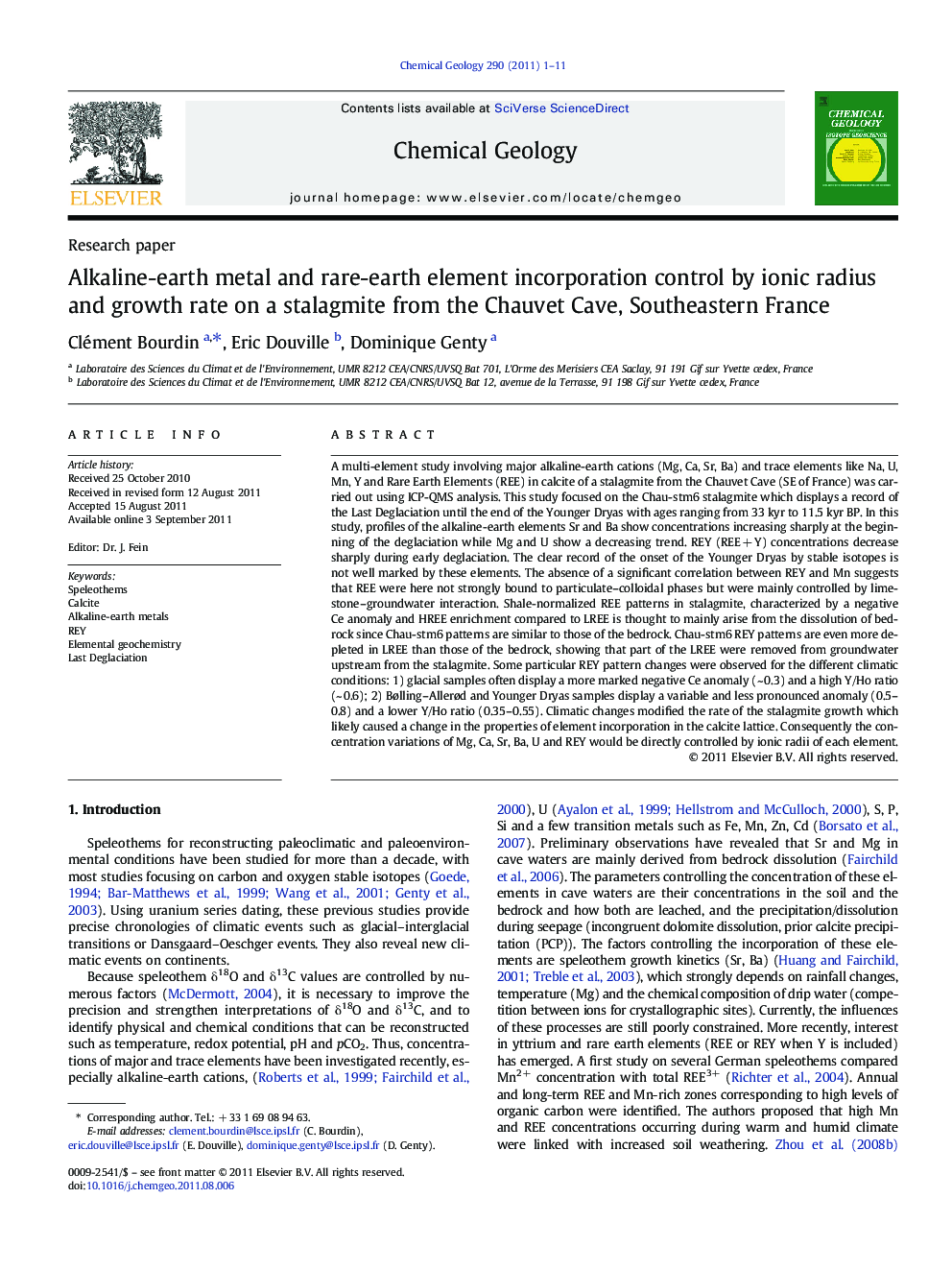| کد مقاله | کد نشریه | سال انتشار | مقاله انگلیسی | نسخه تمام متن |
|---|---|---|---|---|
| 4699630 | 1637657 | 2011 | 11 صفحه PDF | دانلود رایگان |

A multi-element study involving major alkaline-earth cations (Mg, Ca, Sr, Ba) and trace elements like Na, U, Mn, Y and Rare Earth Elements (REE) in calcite of a stalagmite from the Chauvet Cave (SE of France) was carried out using ICP-QMS analysis. This study focused on the Chau-stm6 stalagmite which displays a record of the Last Deglaciation until the end of the Younger Dryas with ages ranging from 33 kyr to 11.5 kyr BP. In this study, profiles of the alkaline-earth elements Sr and Ba show concentrations increasing sharply at the beginning of the deglaciation while Mg and U show a decreasing trend. REY (REE + Y) concentrations decrease sharply during early deglaciation. The clear record of the onset of the Younger Dryas by stable isotopes is not well marked by these elements. The absence of a significant correlation between REY and Mn suggests that REE were here not strongly bound to particulate–colloidal phases but were mainly controlled by limestone–groundwater interaction. Shale-normalized REE patterns in stalagmite, characterized by a negative Ce anomaly and HREE enrichment compared to LREE is thought to mainly arise from the dissolution of bedrock since Chau-stm6 patterns are similar to those of the bedrock. Chau-stm6 REY patterns are even more depleted in LREE than those of the bedrock, showing that part of the LREE were removed from groundwater upstream from the stalagmite. Some particular REY pattern changes were observed for the different climatic conditions: 1) glacial samples often display a more marked negative Ce anomaly (~ 0.3) and a high Y/Ho ratio (~ 0.6); 2) Bølling–Allerød and Younger Dryas samples display a variable and less pronounced anomaly (0.5–0.8) and a lower Y/Ho ratio (0.35–0.55). Climatic changes modified the rate of the stalagmite growth which likely caused a change in the properties of element incorporation in the calcite lattice. Consequently the concentration variations of Mg, Ca, Sr, Ba, U and REY would be directly controlled by ionic radii of each element.
► The Chau-stm-6 growth rate increases during the Last Deglaciation and remains high during the Younger Dryas.
► Concentrations of large ions increase while concentrations of small ions decrease during the Last Deglaciation.
► Changes in growth rate seem to be the first-order control on this record.
Journal: Chemical Geology - Volume 290, Issues 1–2, 7 November 2011, Pages 1–11